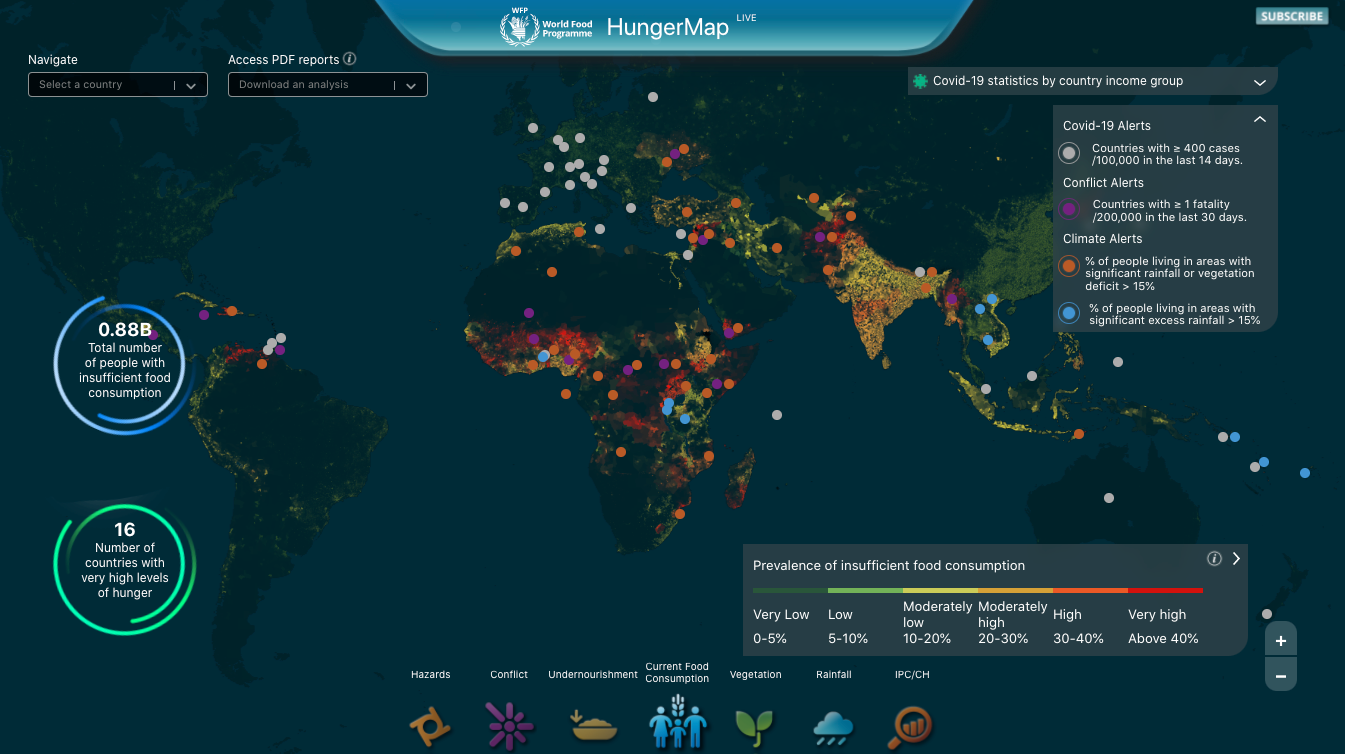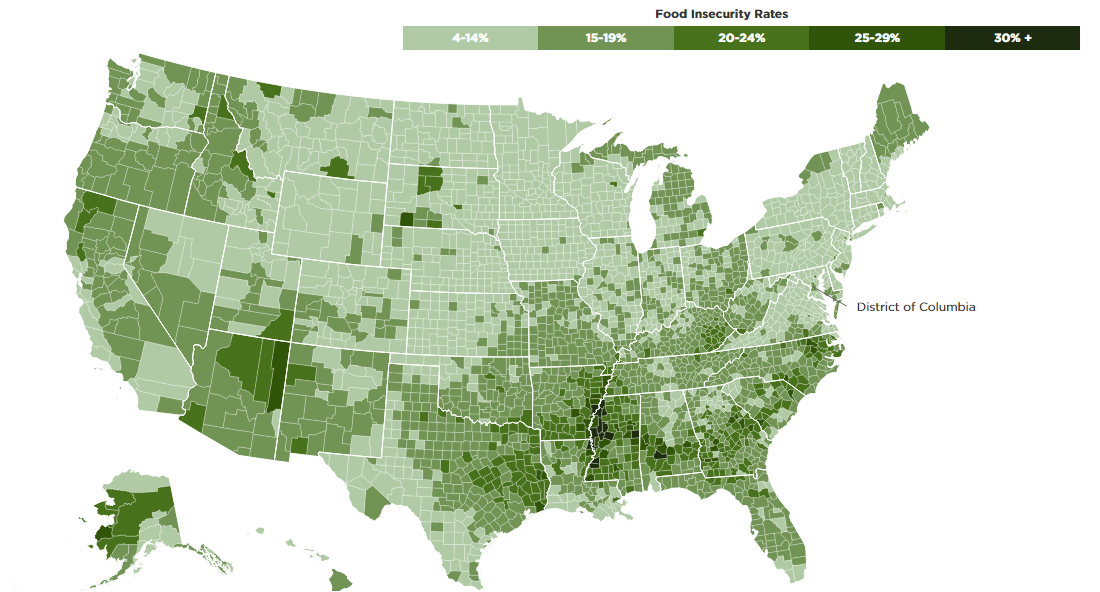What is food security? The Food and Agriculture Organization (FAO) of the United Nations defines food security as all people, at all times, having physical, social, and economic access to sufficient, safe, and nutritious food which meets their dietary needs and food preferences for an active and healthy life. Using this definition, the FAO identifies four dimensions of food security:
- Physical AVAILABILITY of food
- Economic and physical ACCESS to food
- Food UTILIZATION
- STABILITY of the other three dimensions over time5
Conversely, food insecurity exists when people lack secure access to sufficient amounts of safe and nutritious food for normal growth and development and an active and healthy life.
The Millennium Development Goals endorsed by the United Nations as a commitment to build a safer, more prosperous, and equitable world, included a hunger target (1c). This target was to halve, between 1990 and 2015, the proportion of people who suffer from hunger. The FAO reports that developing nations as a whole have nearly met the 1c target. However, wide differences persist across regions. “Some have made rapid progress in reducing hunger: Latin America as well as the Eastern and South-Eastern regions of Asia have all achieved both the MDG 1c hunger target...The MDG 1c target has been reached in the Caucasus and Central Asia and in the Northern and Western regions of Africa. Progress has also been recorded in the Caribbean, Oceania, Southern Asia, and Southern and Eastern Africa, but at too slow a pace to reach the MDG 1c target. Finally, Central Africa and Western Asia are moving away from the hunger targets, with a higher proportion of undernourished in the population now than in 1990–92.”6
On January 1, 2016, the 17 Sustainable Development Goals of the 2030 Agenda for Sustainable Development — adopted by world leaders in September 2015 at an historic UN Summit — officially came into force. Over the next fifteen years, with these new Goals that universally apply to all, countries will mobilize efforts to end all forms of poverty, fight inequalities and tackle climate change, while ensuring that no one is left behind. The Sustainable Development Goals (SDGs) build on the success of the Millennium Development Goals and aim to do more to end all forms of poverty via calls to action by all countries and all peoples. The SDGs are not legally binding, but governments are expected to take ownership and establish national frameworks for the achievement of the 17 goals.
Chronic hunger— consuming less than a minimum level of kilocalories—can lead to malnutrition whereby a person’s diet does not provide adequate nutrients for growth and maintenance. In some instances, a widespread scarcity of food known as famine is caused by several factors including crop failure, population imbalance, or government policies. This phenomenon is usually accompanied or followed by regional malnutrition, starvation, epidemic, and increased mortality.
Although food security is a global problem, it is also a problem that is prevalent domestically. According to a 2015 report by USDA’s Economic Research Service, “14.0 percent of U.S. households were food insecure at least some time during [2014], including 5.6 percent with very low food security, meaning that the food intake of one or more household members was reduced and their eating patterns were disrupted at times during the year because the household lacked money and other resources for food.”7 Children were food insecure at times during the year in 9.4 percent of US households with children (3.7 million households), meaning these households were unable at times during the year to provide adequate, nutritious food for their children.
One of the factors contributing to US household food insecurity is the existence of urban neighborhoods and rural towns without ready access to fresh, healthy, and affordable food. These food deserts are found throughout the United States where grocery stores are nearly non-existent in a specific area, and consumers must rely on restaurants and convenience stores for food. Fresh, nutritious food is often replaced by processed foods or is simply not available. This lack of access to fresh food can lead to poor diets and may result in higher rates of obesity and other dietary-related illnesses.

